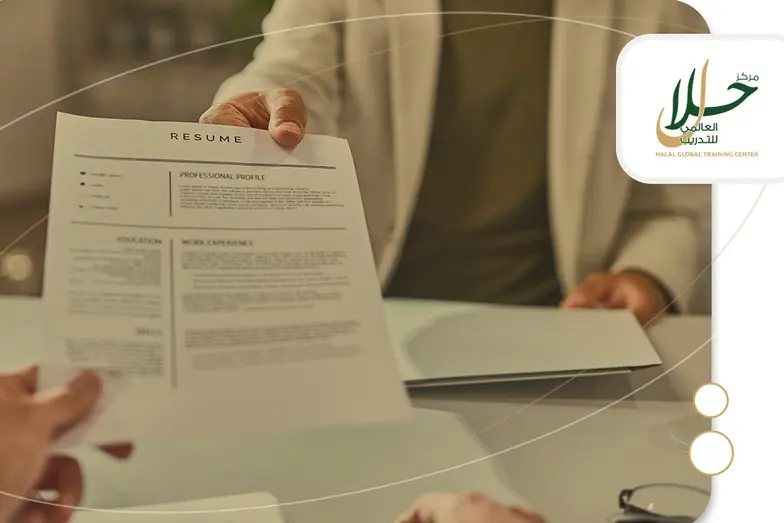
The professional way to write a CV
The Professional Way to Write a CV: Your Comprehensive Guide from Halal International Training Center
A CV is your gateway to the world of work. It is the first impression a person makes on an employer and a powerful tool that enables you to showcase your skills, experience, and achievements in a professional manner.
In this article, Halal International Training Center provides a comprehensive guide to building a strong CV that increases your chances of landing the job you desire.
Basic Steps to Building a Professional CV:
1. Define Your Goal:
Before you start writing your CV, define its purpose. Are you looking for a new job? Apply for a scholarship? Or do you want to showcase your skills and experience to potential clients? Defining your goal will help you focus on the most important information in your CV.
2. Choose the Appropriate Format:
There are two main types of CV formats:
Reverse Chronological Format: This is the most common format, where experience and education are listed from most recent to oldest. This format is suitable for jobs that require specific skills and experience.
Functional Format: This format focuses on skills and jobs rather than chronologically. This format is suitable for jobs that require diverse skills or for people with gaps in their career history.
3. Write a Strong Personal Summary:
A personal summary is a brief statement at the top of your resume that summarizes your skills, experience, and accomplishments. It should be compelling and grab the employer's attention.
4. Provide Your Contact Information Clearly:
Make sure your contact information is clearly listed on your resume, including your full name, address, phone number, and email address.
5. List Your Experience and Skills Accurately:
List your experience and skills accurately, focusing on those skills and experience relevant to the position you are applying for. You can use keywords from the job description in your resume.
6. List Your Achievements and Successes:
Don't just list your responsibilities in your previous jobs, but also your accomplishments and successes. This will help the employer assess your potential contribution to their company.
7. Use clear and direct language:
Use clear and direct language in your resume. Avoid using complex language or technical terms that the employer may not understand.
8. Proofread your resume thoroughly:
Before submitting your resume, be sure to proofread it thoroughly to ensure it is free of spelling and grammatical errors.
Additional tips for creating a professional resume:
Use clear, easy-to-read font.
Use a structured, easy-to-understand format.
Use appropriate whitespace.
Keep your resume short and concise.
Ensure your resume is appropriate for the job you are applying for.
Tailor your resume for each job you apply for.
Use keywords from the job description in your resume.
Get help from a friend, colleague, or resume writing expert.
Tools and Resources for Building a Professional Resume:
Canva: Canva offers a range of ready-made templates for creating a professional resume.
Jobseeker: Jobseeker offers a free professional resume writing service.
Resume-Now: Resume-Now offers a suite of tools for building a professional resume.
Understanding the Saudi Labor System
Marketing...from idea to success




